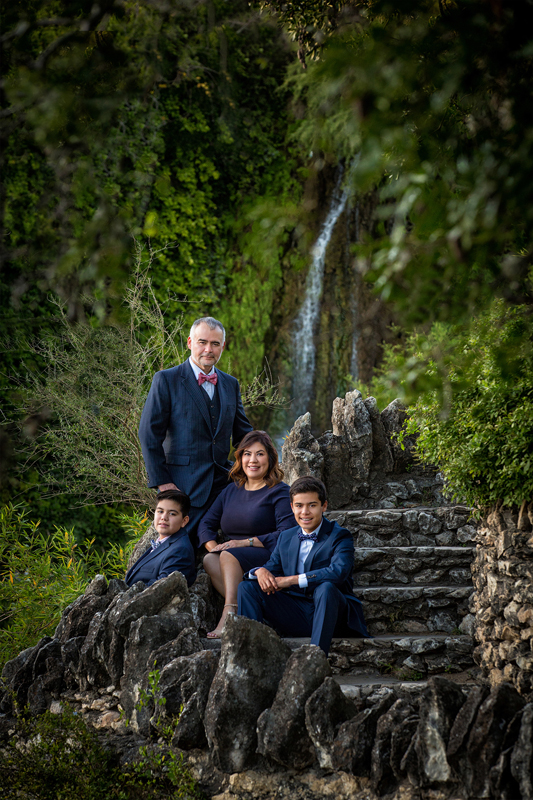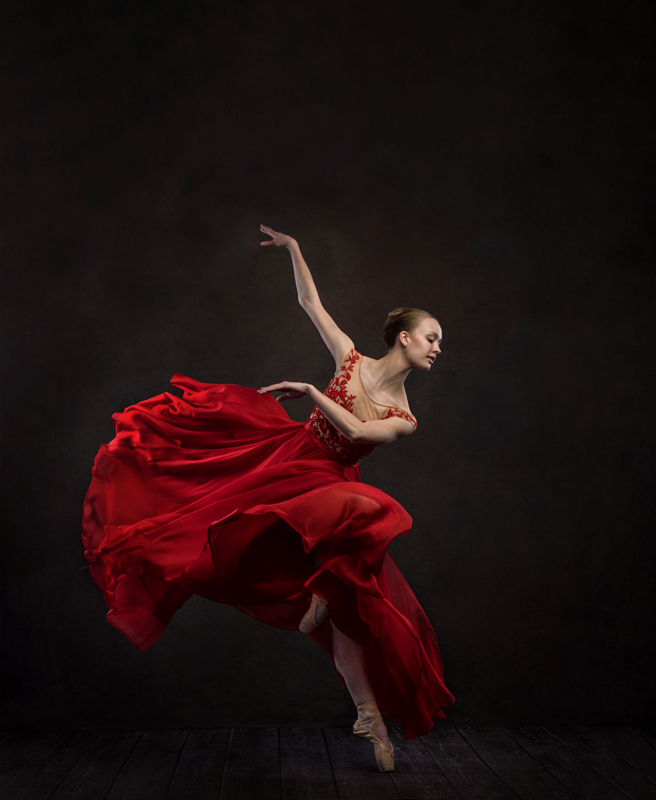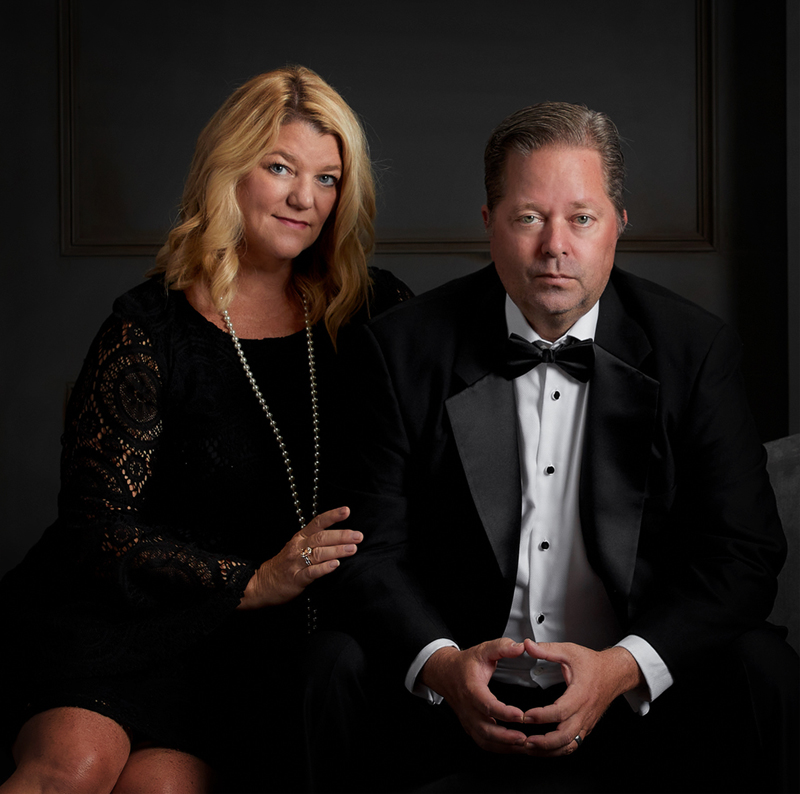The Elizabeth Homan Story
By Bill Hedrick
There are a lot of photographers out there who see photography as little more than an artistic expression of their individuality and are convinced that it can never become a profitable business. After all, today’s technology has made it possible for just about anybody to take a perfectly exposed photograph without knowing anything at all about photography. As a result, many believe there is little need for a professional photographer anymore. Obviously, those people have never met Elizabeth Homan of San Antonio, Texas, a photographer who realized very early in her career that the best path to success was to seek out those individuals who were truly successful and who created amazing images and learn from them.
“Hopefully, I can continue photographing families, children, and individuals as long as my eyes can see.”
Elizabeth’s passion for photography began in high school and continued with a minor in photography while attending college. But, when she decided to launch her own photography business in 1992, she had very little knowledge of how to actually run a business.
“I relied heavily on my Dad who was my business manager,” she explains. “Mom did sales.”
That’s when a friend told her about the San Antonio Professional Photographers Association and the Texas Professional Photographers Association. “I absorbed everything I possibly could at workshops and conventions in those early years,” she explains. That is where I met mentors who became most influential in my progress.”
 It was at the 1992 TPPA Summer Seminar in Kerrville, Texas, that Elizabeth met her first mentor, Bruce Hudson of Renton, Washington. His program was all about building a successful studio and the unlimited marketing strategies for the 1990s. He spoke about how important it was to build a photography business that stood out among the rest and how state-of-the-art images and marketing ideas could motivate you to take that business to the next level. Bruce commented back then that “Awards and trophies are nice, but every studio needs to have a strong business foundation to keep clients coming back for more.” It was just the kind of message that Elizabeth wanted to hear.
It was at the 1992 TPPA Summer Seminar in Kerrville, Texas, that Elizabeth met her first mentor, Bruce Hudson of Renton, Washington. His program was all about building a successful studio and the unlimited marketing strategies for the 1990s. He spoke about how important it was to build a photography business that stood out among the rest and how state-of-the-art images and marketing ideas could motivate you to take that business to the next level. Bruce commented back then that “Awards and trophies are nice, but every studio needs to have a strong business foundation to keep clients coming back for more.” It was just the kind of message that Elizabeth wanted to hear.
Elizabeth was off to a great start but soon realized she needed to develop her own style of photography and that is when she met a Canadian photographer, Don MacGregor, from Richmond, British Columbia. “Don had the most impact on my photographic style, especially when it comes to family portrait work,” says Elizabeth. “He taught me to incorporate important things and places into my portraits and I’ve been doing that ever since. The way I see light and compose my clients all comes from his teachings.”
Her most recent mentor is Gregory Daniel of Titusville, Florida, another long-time instructor at the Texas School of Professional Photography. “Gregory taught me how to take my artwork and business to the luxury level.” But Elizabeth will be the first to admit that she has taken “nuggets of information” from many other teachers over the years. “It is such a gift for those who have been successful to share their knowledge with those of us coming up behind them,” she explains.

With the volumes of knowledge and inspiration from the best of the best, Elizabeth began building her business. “I started out as a natural light photographer. I loved using reflectors in combination with the natural light to create my images. Years later, as digital cameras came along, I really started embracing off-camera flash. Digital technology has changed my work a lot. When I look at my early work, sometimes I don’t love it and sometimes I feel proud of where I was then. I hear this happens to all of us. So we have to find a way to continue to inspire ourselves to be creative.”
It was 28 years ago when Elizabeth built her studio on 2.5 acres of ground on the outskirts of San Antonio and soon began photographing small families and individuals such as high school seniors and children. In those early years, the rest of us knew her as Elizabeth Cruger. Her parents were recently retired from the military. Elizabeth was actually a ballet dancer and those 26 years of experience as a dancer would play a major role in her portrait work for years to come.
Embarking on a new career was a big step and Elizabeth knew it. With the help and support of her parents, she was on her way. It was a family effort but little did she know that more help would soon be on the way.
 In 1996, Elizabeth Cruger met Trey Homan, a middle school choir director. Trey had a Masters Degree in Vocal Performance and Choral Conducting but the new love of his life would soon take him away from all of that, and he quit his job to become a significant part of the team at Artistic Images.
In 1996, Elizabeth Cruger met Trey Homan, a middle school choir director. Trey had a Masters Degree in Vocal Performance and Choral Conducting but the new love of his life would soon take him away from all of that, and he quit his job to become a significant part of the team at Artistic Images.
“Trey manages all the business at the studio and helps me with sessions and weddings. He also designs albums and much more,” says Elizabeth. “Trey and I know our strengths and weaknesses and we have our defined roles in the business. The only times we have issues is when someone steps out of their role and tries to do the other’s job. I couldn’t photograph a family or a child session without him.”
As for himself, Trey is modest about his role at Artistic Images. When Elizabeth’s father finally decided to retire “the second time,” Trey officially took over duties as the business manager for the studio. “He does all the bookkeeping, pays the bills, retouches and designs albums, frames wall portraits,” Elizabeth explains.
However, if you ask Trey what his primary function is, he jokingly relates that he is “the resident toilet unclogger.” But it should also be pointed out that Trey Homan has a green thumb which comes in very handy on the 2.5 acre grounds of the studio and, according to Elizabeth, spends a lot of time making it beautiful. But that’s not all! “Most importantly,” says Elizabeth, “he cooks dinner for me nearly every night because he’s a wonderful chef.”
Another asset that Trey brings to the business as well as the family is that he works well with children, enabling Elizabeth to focus on doing the photography while he focuses on getting expressions. “We have three boys,” says Elizabeth, “one of whom has special needs. He is often the one who goes home when needed so I can work with client appointments.”
Then, just when you thought Trey’s hands were full working behind the scenes, he somehow manages to find time to volunteer in another role. One of his many super powers, according to Elizabeth, is his willingness to donate his time to organizations such as the Texas Professional Photographers Association (where he served as President), Texas School Charities, the Professional Photographers of San Antonio, as well as the high school band and football programs. His ability to multi-task does not go unnoticed and Elizabeth will be the first to tell you how much she depends on him each day.
At one point, Elizabeth and Trey had 11 employees, but it wasn’t long until the business model began to change, and Elizabeth began going where her clients wanted to go, often to their homes, ranches, or vacation homes. Over the years, this evolved into more and more “Destination Portraits” where she goes anywhere in the world to do portrait work. “Because I travel a lot,
I travel light. I use Canon equipment and Godox flashes, typically one off-camera flash in an octagon softbox. I’m not an equipment junkie at all.”
Her style of portraiture has been unmistakable and her 26 years of experience as a ballet dancer has much to do with that. “Posing comes natural for me. While it’s not always perfect, I do think my posing has a style that people recognize. The most common thing people say about my work is that the posing looks natural. I love to give space around the family. So, when I create large wall art, it looks more like a piece of art than a ‘picture’ of how they look.”
She serves primarily the luxury market although, according to Elizabeth, it didn’t start out like that. Over the years, Artistic Images has had to control their demand with pricing. “My clients are the type of people who hire others to do things for them. They are not ‘do-it-yourself’ people. They love the fact that we are designing portraits for specific spaces in their home and that we install and deliver their portraits to them.” Interestingly enough, this personal service is a familiar theme with one of her mentors, Gregory Daniel, who has written a number of articles on the subject in this magazine.

Another thing that makes Elizabeth’s occupation even more rewarding are the generations of people she has photographed over the last 30 years or so. “I photograph high school seniors whose parents I also photographed when they were in high school. Of course, during that time, prices have gone up quite a bit but the service and quality they receive has also gotten better and more customized.”
Then there are the memories. “We can still laugh about some of them to this day,” she explains. “But some of those memories have an emotional impact that could rip your heart out. I have lost many clients over the years and the hardest ones are when you know this is their last portrait session. My clients become my friends… almost family. Each one I have lost has been and will continue to be greatly missed. But the most rewarding part of that is knowing that what I did for that family made such an impact. Many professions don’t have that kind of lasting impression on people.”
Even so, there are times when even Elizabeth Homan gets “stuck in a rut,” so to speak. Recalling her 26 years as a ballet dancer, she says, “Despite the fact that I cannot actually do any of the poses anymore myself, in my mind, I can still see and feel myself doing them.” So, it was time to do something just for Elizabeth.
“My absolute favorite thing to photograph are dancers,” she explains. “So finally, after years of wanting to do it, I finally was able to spend the time creating some pieces of dance art with beautiful dancers.”
“I’m not an equipment junkie at all.”
It’s a bit of a break from the breathtaking images taken around some of San Antonio’s historic missions that she is so well-known for. “I love the missions but I have photographed there 3,742 times and could do this in my sleep. So, I wanted to shake things up a bit and do something that was inspiring for my creativity, something I highly recommend for everyone.”
She adds, “What it helped me to do was to try to look at these places that I photographed so many times with new eyes, from new angles, or with new lenses. By the time my busy spring season approached, I had some renewed energy and creativity.”
That energy is also evident in the class that Elizabeth and Trey teach at the Texas School of Professional Photography, something they’ve done for the past 20 years. Right now, this amazing couple show no signs of slowing down. However, Elizabeth hints that might happen once their youngest gets through college.
 When Elizabeth Homan first dreamed of being a professional photographer, she did her homework and made a conscious decision to do it right the first time. That meant seeking out those with a proven record of success who made exceptional images and learn from them. She was a good student and soon developed a style of her own that is recognized worldwide. While most folk talk about retiring after a successful career, the prospects of it are still somewhat up in the air. “I won’t say I’ll retire because I can’t imagine doing anything else. Hopefully, I can continue photographing families, children, and individuals as long as my eyes can see.”
When Elizabeth Homan first dreamed of being a professional photographer, she did her homework and made a conscious decision to do it right the first time. That meant seeking out those with a proven record of success who made exceptional images and learn from them. She was a good student and soon developed a style of her own that is recognized worldwide. While most folk talk about retiring after a successful career, the prospects of it are still somewhat up in the air. “I won’t say I’ll retire because I can’t imagine doing anything else. Hopefully, I can continue photographing families, children, and individuals as long as my eyes can see.”











